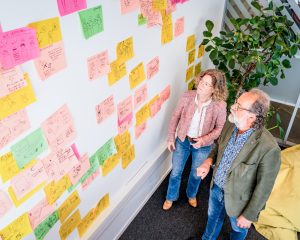Media: Innovation accelerator Eindhoven Engine enters new phase
Technology with a clear social purpose an starting with the problem.
As a society, we face numerous challenges. At Eindhoven Engine, a collaborative program between companies, knowledge institutions, social organizations and citizens in the Brainport region, work has been going on for years on innovations to address these problems. Now the program is breaking new ground.
Source: Eindhoven University of Technology
Media: Technologie met een duidelijk maatschappelijk doel:
[Dutch]
Innovatieversneller Eindhoven Engine gaat nieuwe fase in
Als maatschappij staan we voor talloze uitdagingen. Bij Eindhoven Engine, een samenwerkingsprogramma tussen bedrijven, kennisinstellingen, maatschappelijke organisaties en burgers in de Brainportregio, wordt er al jaren gewerkt aan innovaties om deze problemen het hoofd te bieden. Nu slaat het programma een nieuwe weg in.
Source: Innovation Origins
Science, industry and government seek solution to grid congestion via large-scale living lab on TU/e campus
In the search for solutions to the current grid congestion problem, science, industry, and government are joining forces, killing two birds with one stone.
With the OPZuid project GENIUS, TU/e wants to tackle grid congestion together with companies, municipalities, and the province and, at the same time, set up a sustainable testing ground for relevant future innovations. The starting signal is to commission a battery pack in the size of no less than a sea container for the storage of electrical energy on Monday, 18 November.
The GENIUS battery is essential to a smart control platform that aligns different industrial users, energy sources, and storage systems to prevent energy peaks. The lithium iron phosphate battery contains no cobalt or nickel and acts as energy storage and a control tool. It can coordinate and optimize complex data, allowing it to advise on and anticipate the energy needs of the more than forty faculty and business buildings on the TU/e campus, on which approximately fifteen thousand people depend daily. The energy hub is connected to the public energy grid, allowing energy to be fed back into the grid or shared with users in the local area.
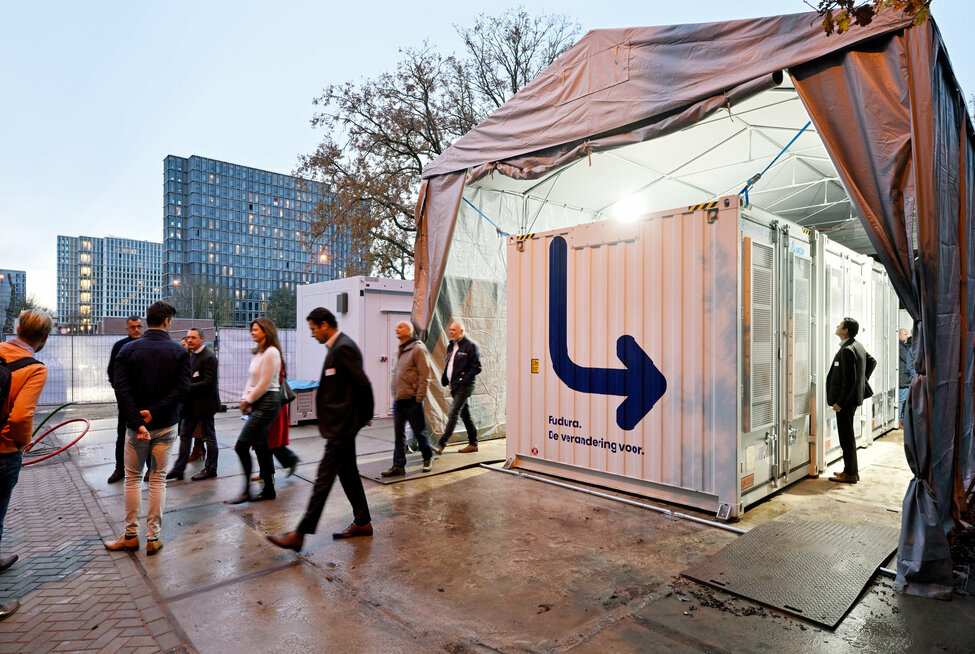
Spreading the rush hour
This battery pack ensures that TU/e no longer causes any exceedances on the contracted capacity and balances the energy consumption better. Simply put, the congestion problem on the energy grid is solved by spreading the morning and evening rush hours. This offers room for further sustainability and expansion of the campus within the current contracted capacity. Think, for example, of heat pumps in combination with Heat and Cold Storage and the arrival of a new clean room.
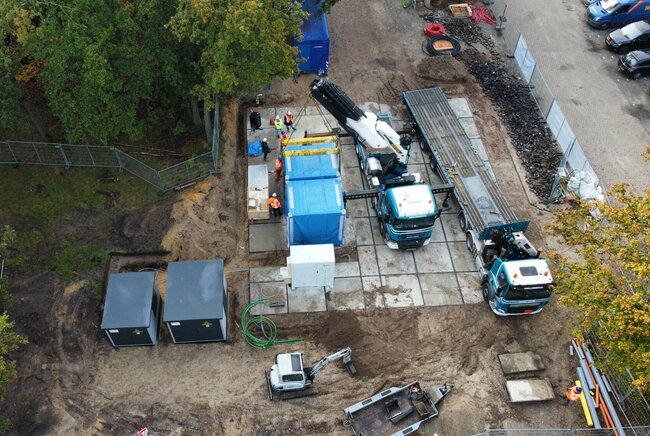
The package easily pays for itself thanks to smart charging and discharging and peak shaving (energy storage when there is little demand and deployment during peak periods). For TU/e, it provides an estimated 20% extra space on its energy grid and capacity because less has to be purchased at unfavorable times (during ‘rush hour’), which lowers the total costs.
This is also beneficial for the grid load in general because TU/e ‘gets out of traffic jams’ at such peak times. More gains can be made in (among other things) the areas of (minimal) CO2 emissions, balancing grid congestion at regional and national levels (TU/e can consume more energy without increasing its connection, leaving capacity for the local area), energy security, peak reduction or the prevention of exceedances on the energy connection.
Blueprint for Dutch industry and grid operators
The system approach not only alleviates the energy needs of the (growing) TU/e campus and distributes them more efficiently but should also ultimately provide a blueprint for Dutch industry and grid operators to tackle grid congestion efficiently. Initially, for the approximately 3500 industrial estates in the Netherlands, mainly in the south of the Netherlands, where grid congestion is slowing down the energy transition and hindering economic growth. That blueprint could then be on the market in four years. This makes OPZuid GENIUS (Grid Efficiency Network Integration for Universal Sustainability) a strategic project with interest from society as a whole, in which open innovation predominates.
In fact, the project functions as a micro-society on campus, providing valuable knowledge about user behavior and how it is influenced and changed by insight into energy use patterns in the long term. This behavioral knowledge is crucial to developing strategies that drive effective behavioral change and promote energy efficiency.
Consortium around OPZuid GENIUS
TU/e President of the Executive Board Robert-Jan Smits: “I am tremendously proud of this project because it brings together a lot of what we stand for as TU/e. With this we are working on sustainability, on solving the grid congestion that all of the entrepreneurial Netherlands is facing, and we are doing this – as a true 4th generation university – in collaboration with a wide range of partners in the region, focused on social impact.”
Mark Cox, Senior Program Manager Energy TU/e: “The GENIUS battery, in combination with intelligent software, can store energy when demand is low so that we can use it during peak times. Thanks to AI, other users, both on campus and in the local area, will not notice this. On the contrary, everyone can benefit from it. When the new Energy Act comes into effect next year, adjacent power grids can be connected. The cleverness of our system approach should then ensure that everyone is always supplied with energy without crossing borders.”
When the new Energy Act comes into effect next year, adjacent power grids can be connected. The cleverness of our system approach should then ensure that everyone is always supplied with energy without crossing borders.
Tom Selten, founder of Simpl.Energy: “With our software, we control the battery, charging stations, and solar panels so that TU/e always remains within the connection. In addition, we optimize the purchase of electricity, thereby minimizing energy costs. And as icing on the cake, with our platform, TU/e has one place where they can see whether all systems are working properly and how much is being earned and saved.”
Daan Pelders, business developer Fudura: “At Fudura, we are proud to be able to participate in this innovative process. We are supplying one of the largest batteries in the Brainport area and integrating it into TU/e’s private grid. We have been TU/e’s partner in energy infrastructure and metering services for many years, and we are grateful for the trust we have received to carry out this project.”
The consortium around OPZuid GENIUS consists of the following parties: TU/e department Real Estate, EIRES, EAISI, Fudura, RIFT, Simpl.Energy, Voltgoed, VBOptimum, ZEnMo, Cube Charging, Enerzien, Eindhoven Engine and Woonbedrijf. An active and connected support group includes the province and municipality, as well as the regional grid operator Enexis. This project was co-financed by the European Union through the award of an OPZuid grant.


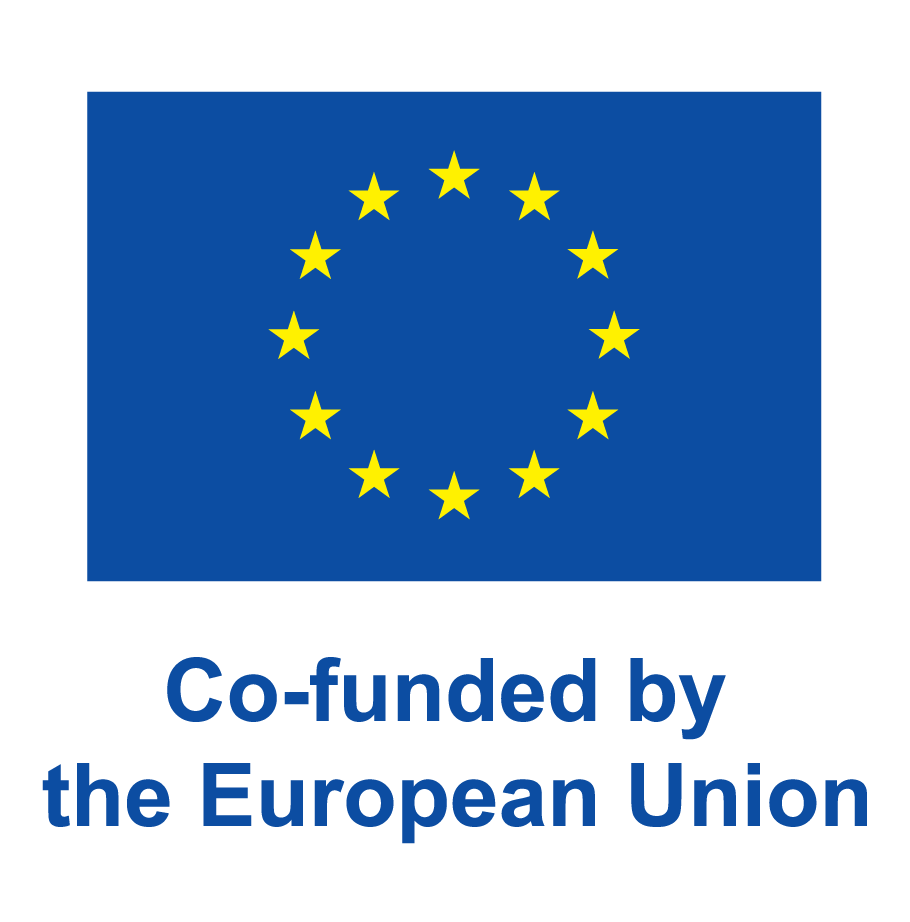
Eindhoven Engine at Dutch Design Week 2024
During the week of October 19 to 27, the annual Dutch Design Week took place. From Monday to Friday during DDW, Eindhoven Engine conducted the workshop ‘Aahh, I don’t get it!!’ at the Plug-in Pavilion on Strijp-S.
As part of the Inclusive Society program, Eindhoven Engine addresses the societal challenge that 2.5 million people struggle with reading, writing, arithmetic, and/or digital skills, which affects them daily. We received over 100 registrations, and ultimately, 123 participants attended, spread over the five days. We are very pleased with the turnout and are happy to have inspired so many people and raised awareness!
- More about Inclusive Society
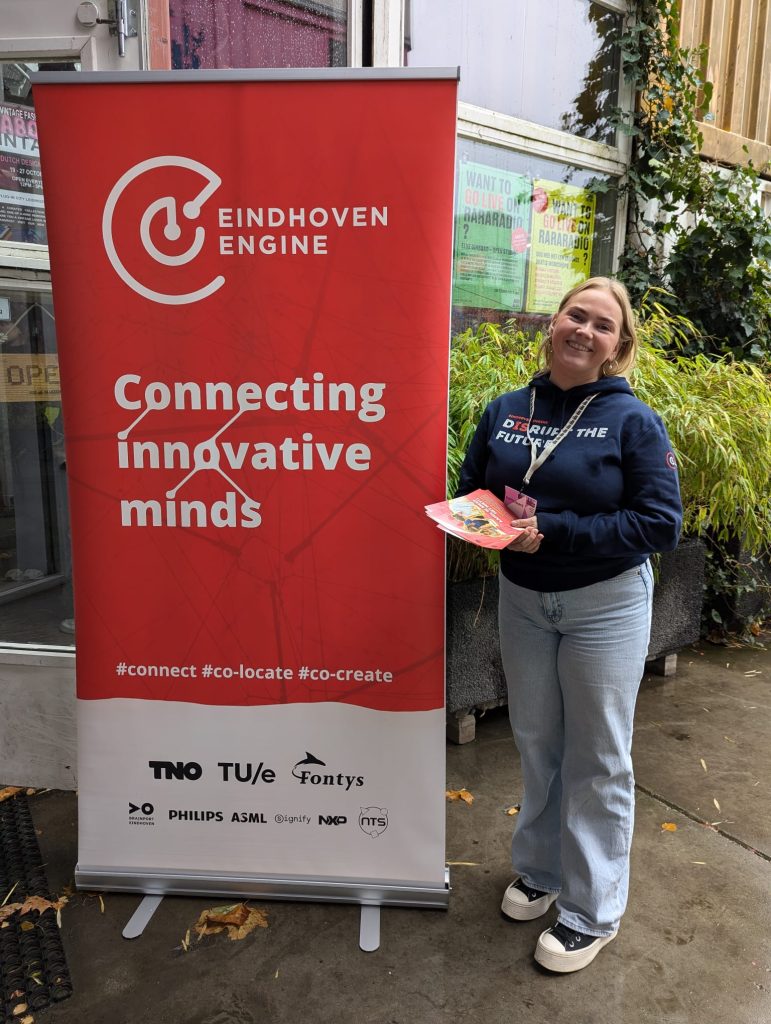
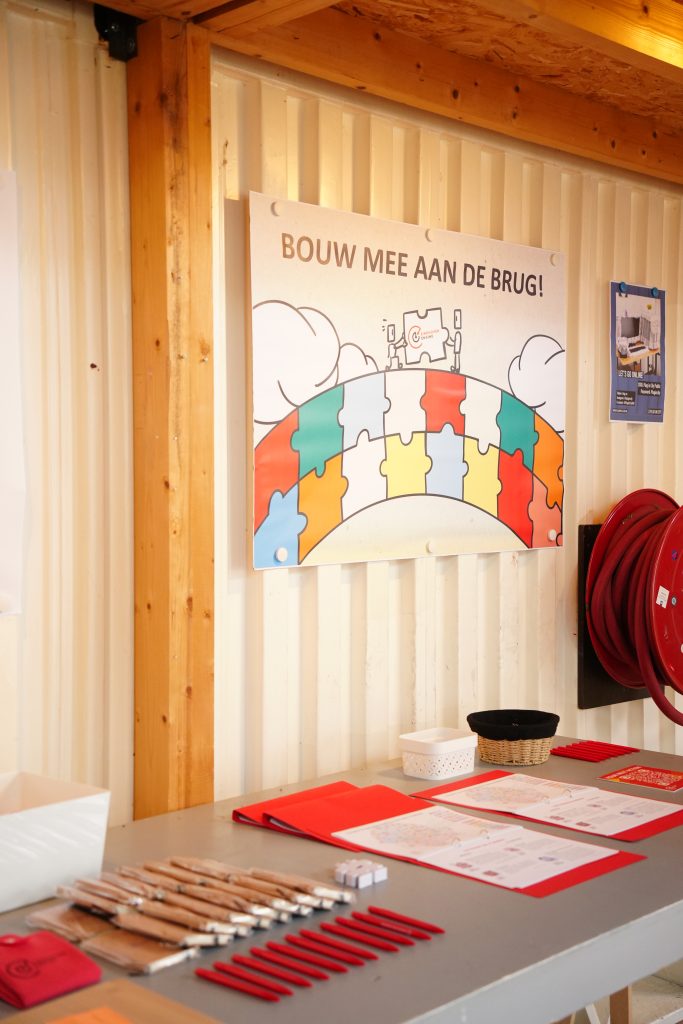
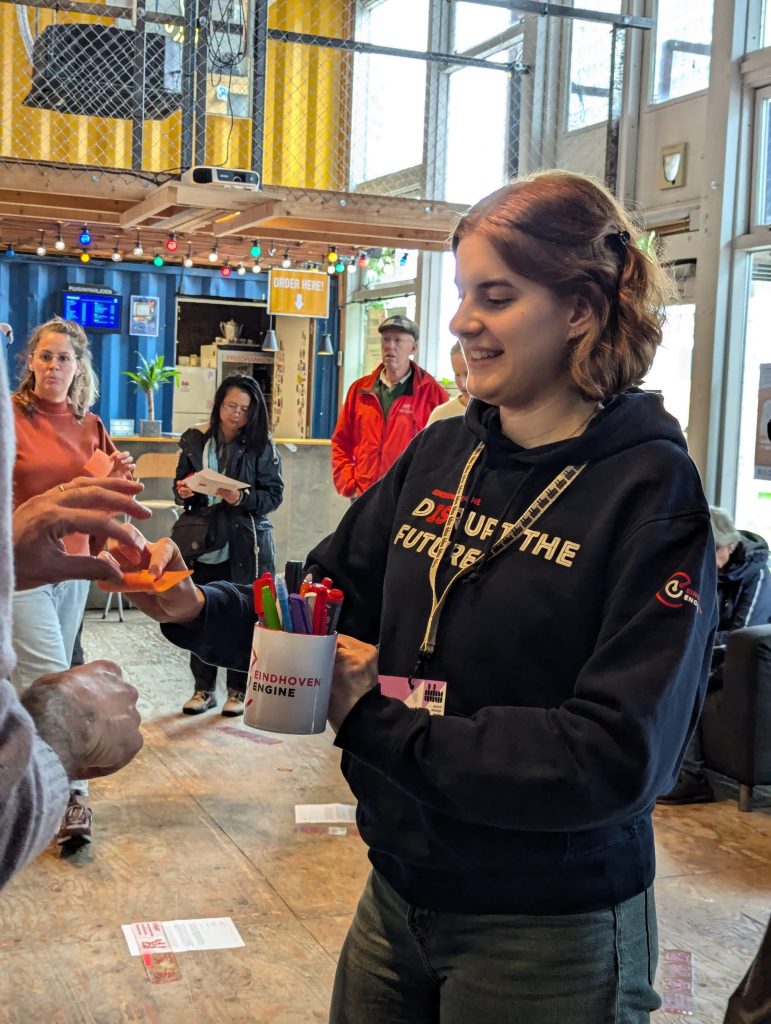
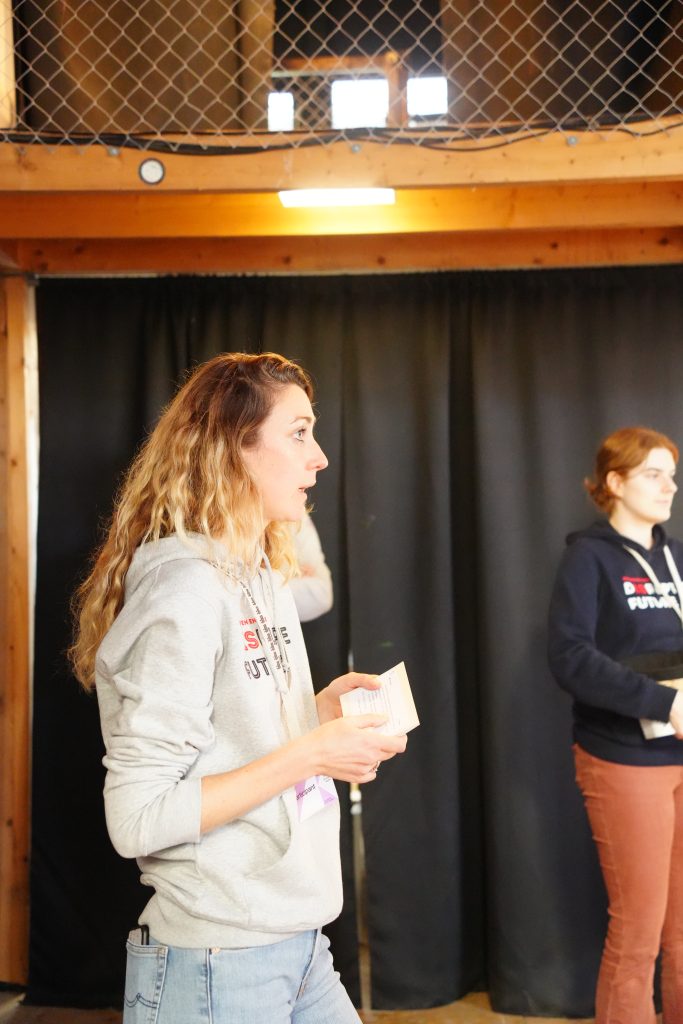
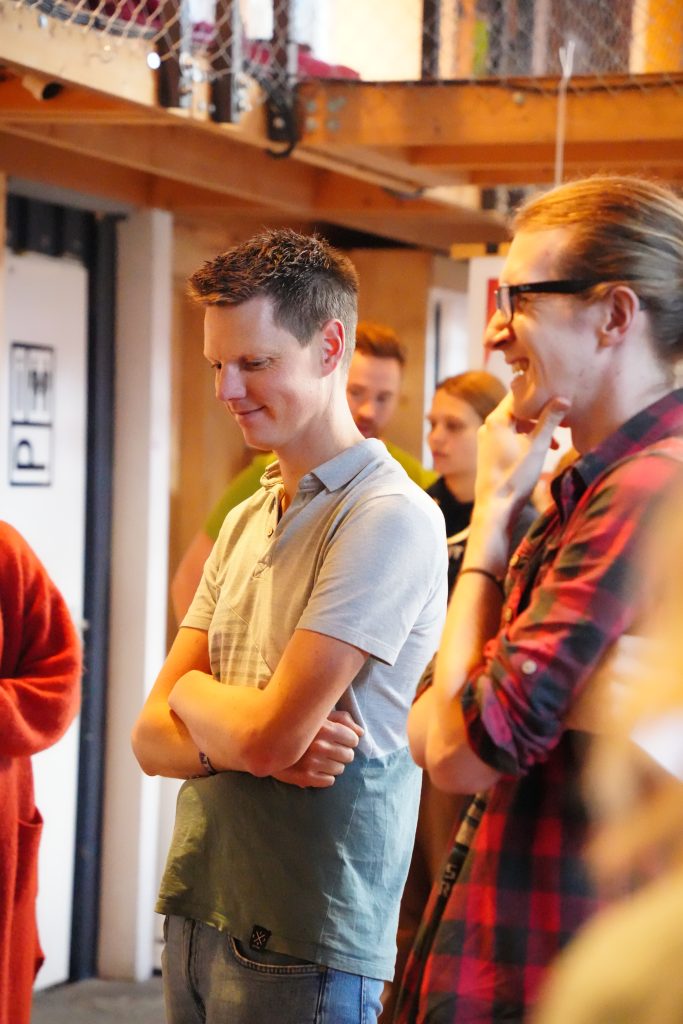

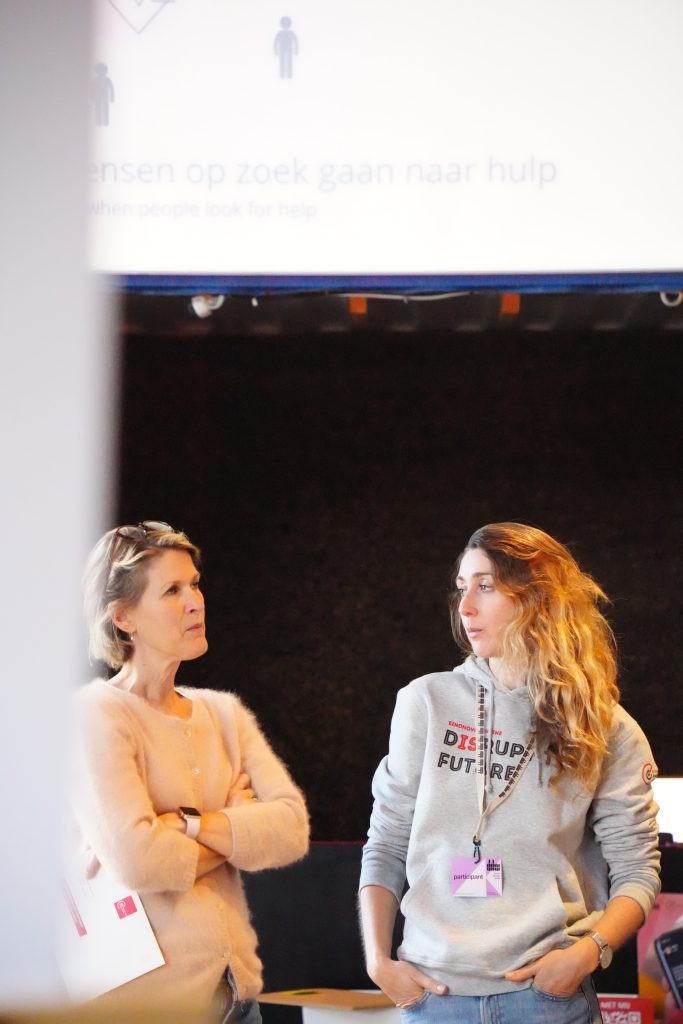
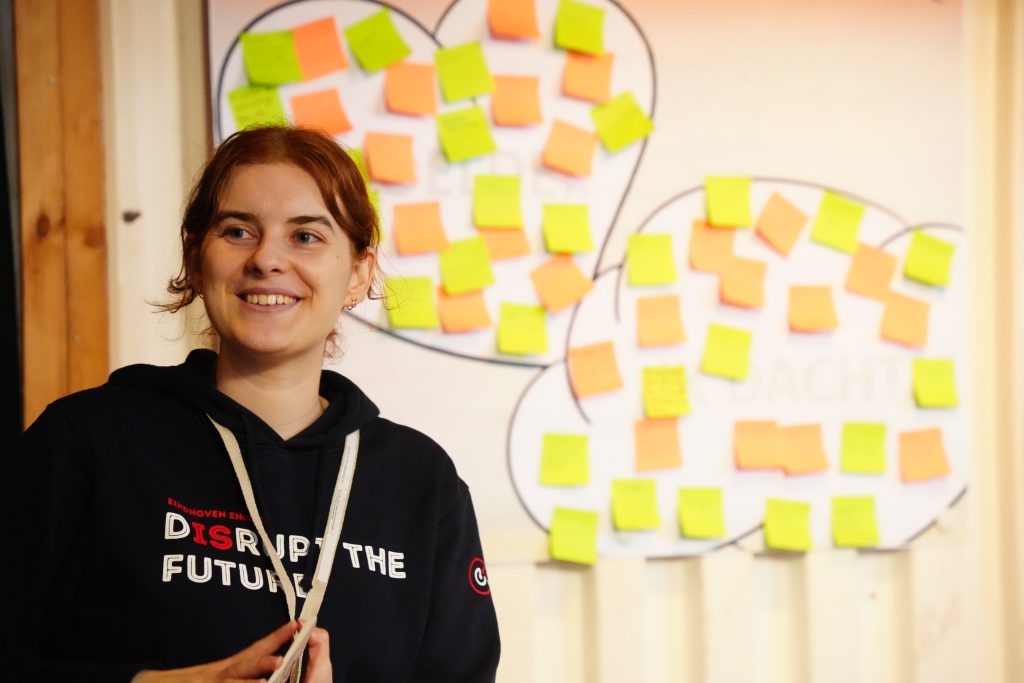
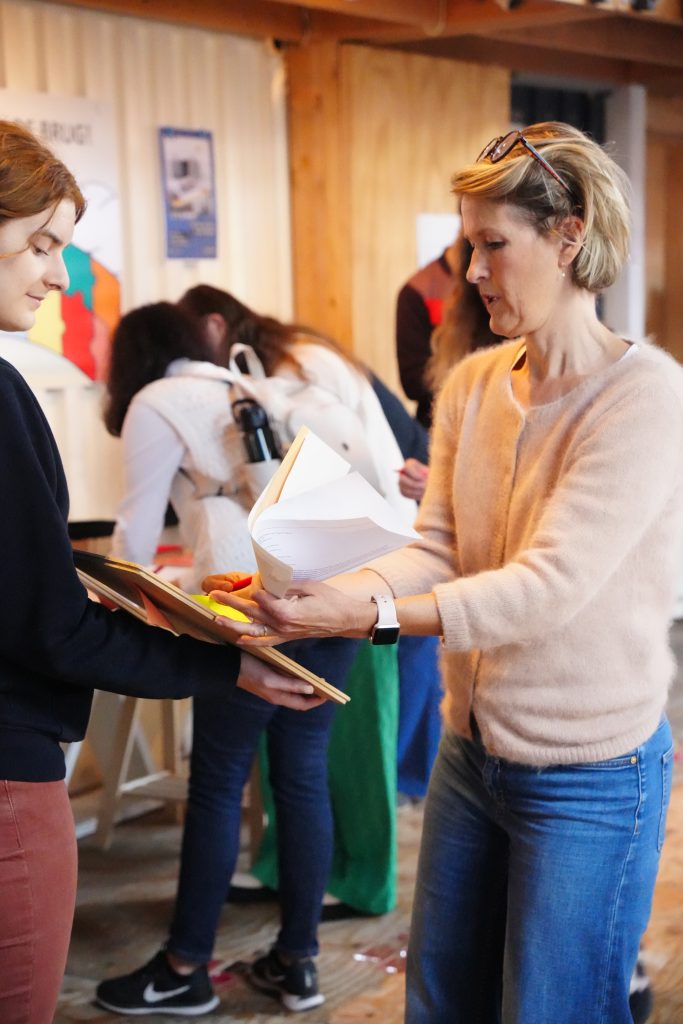
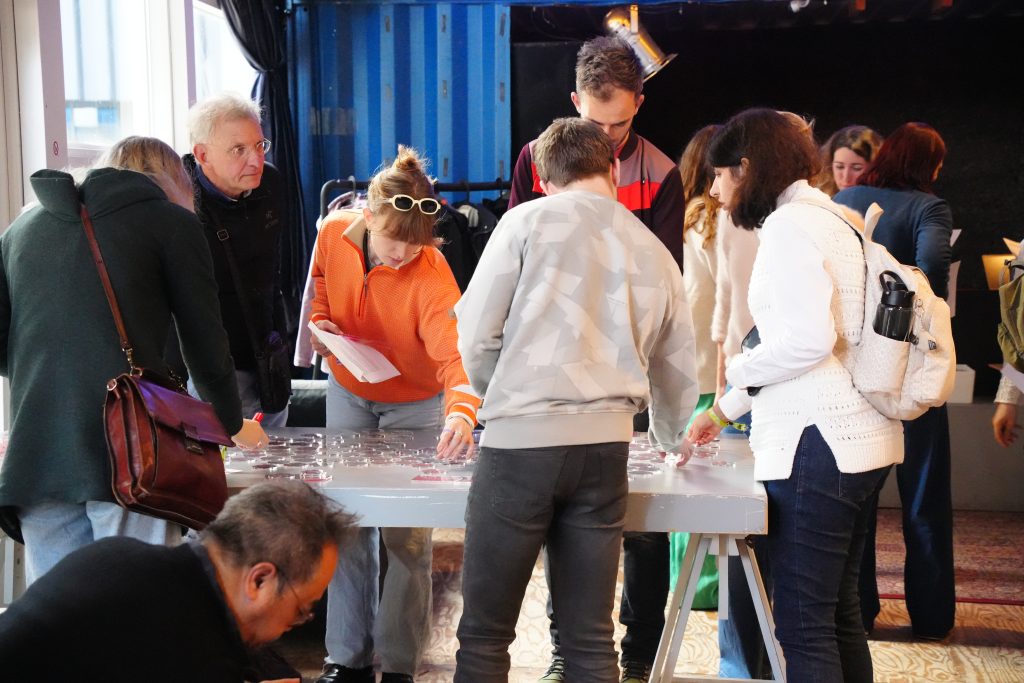
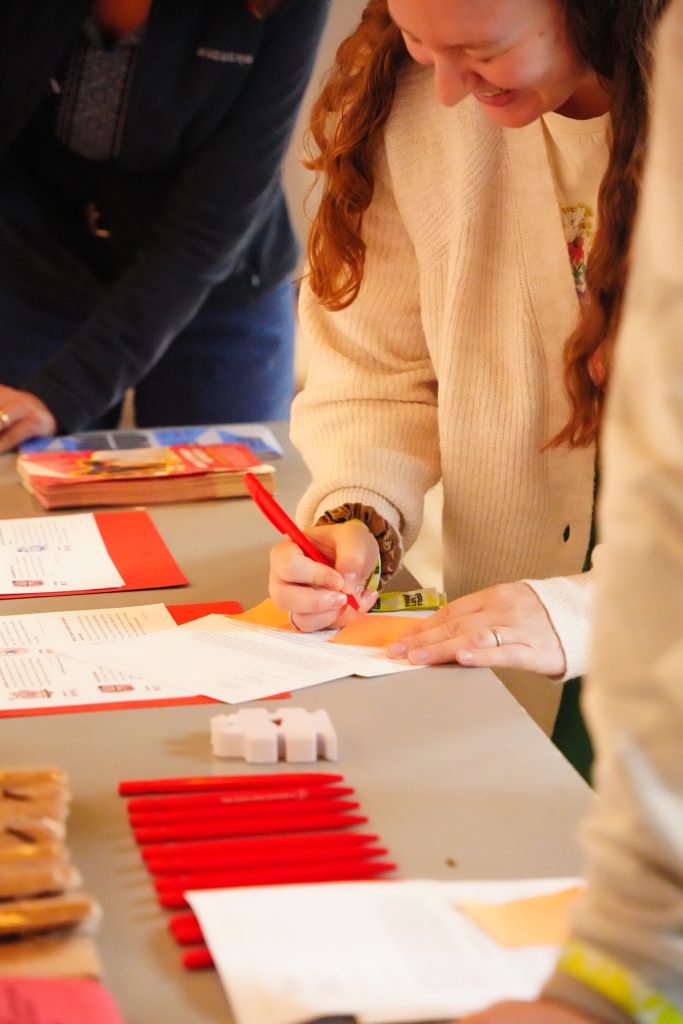
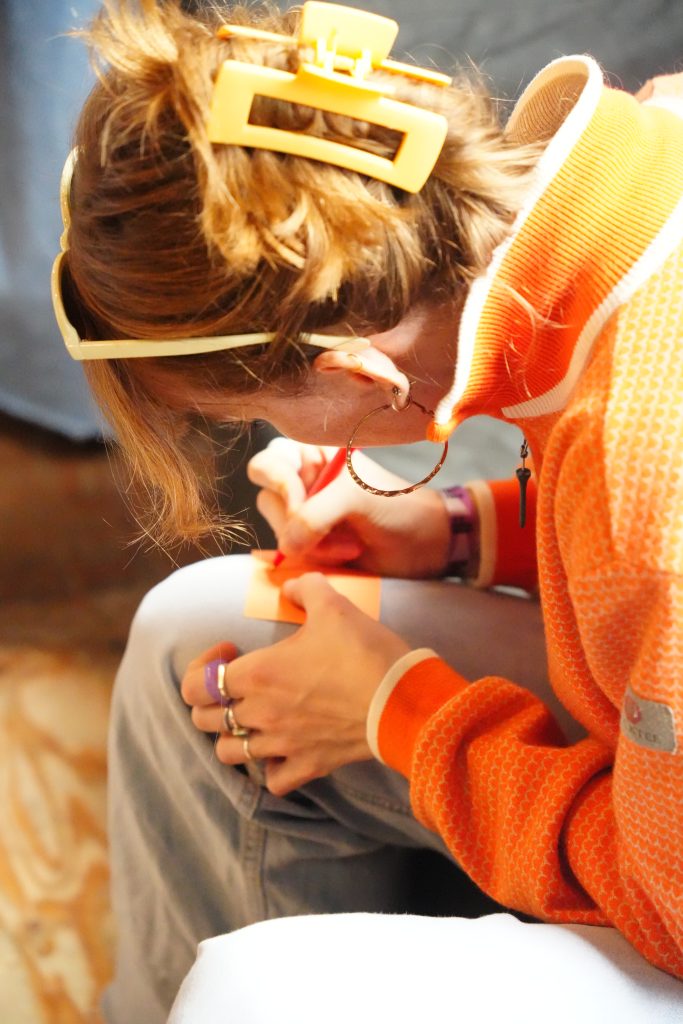
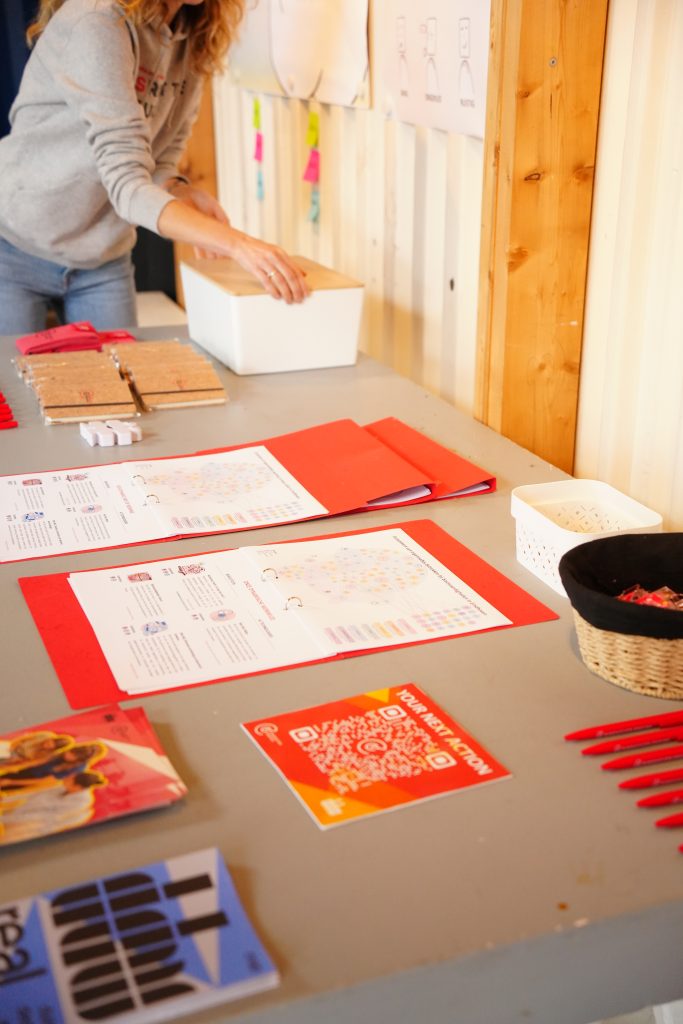
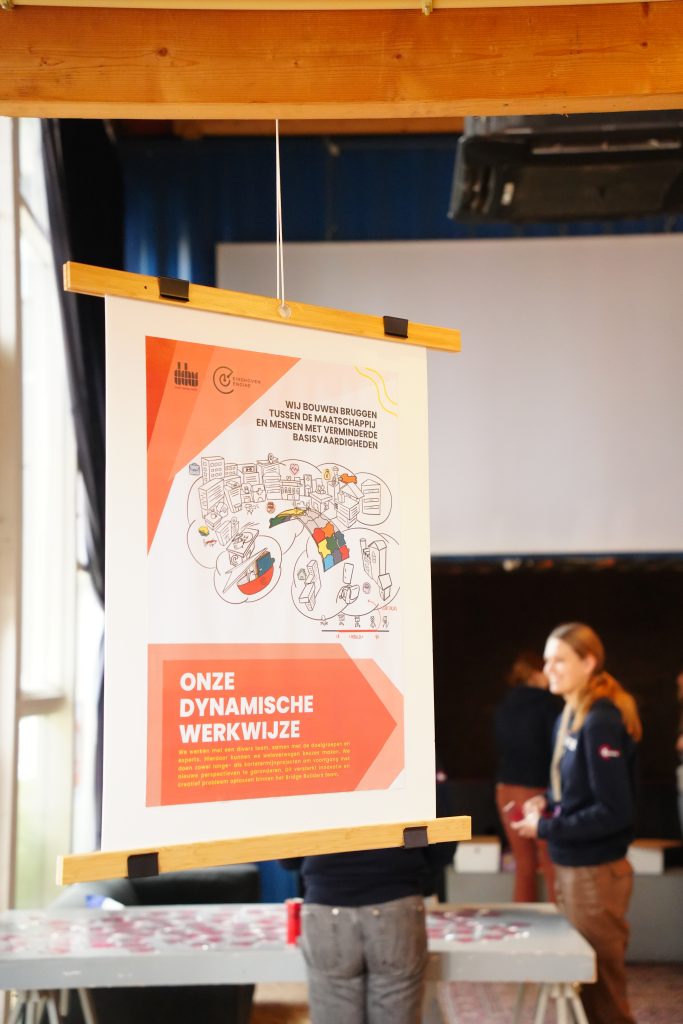
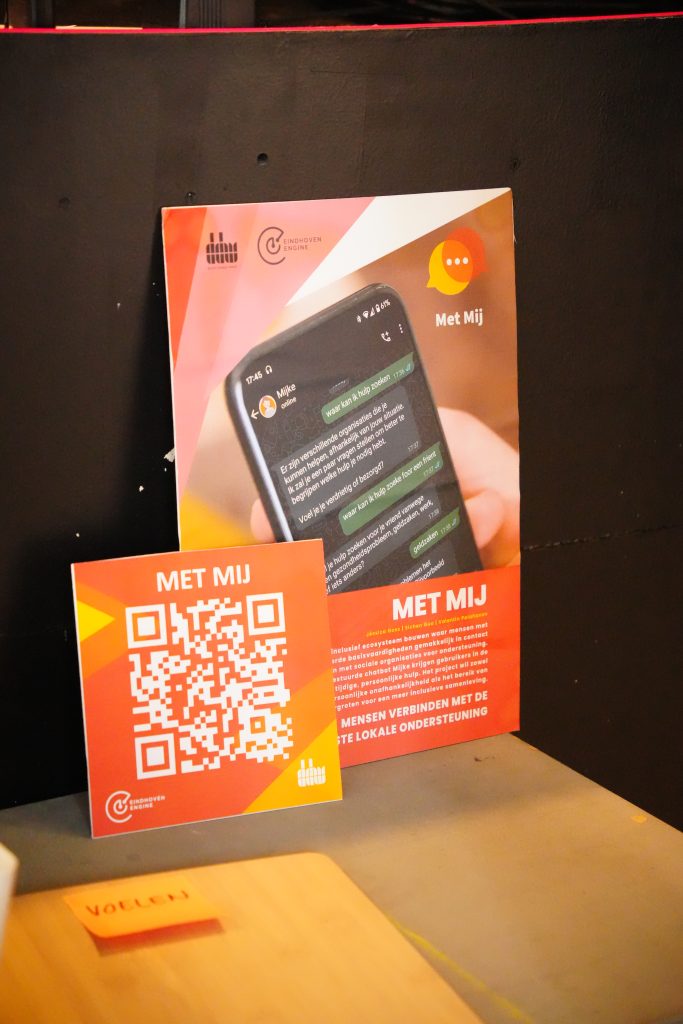
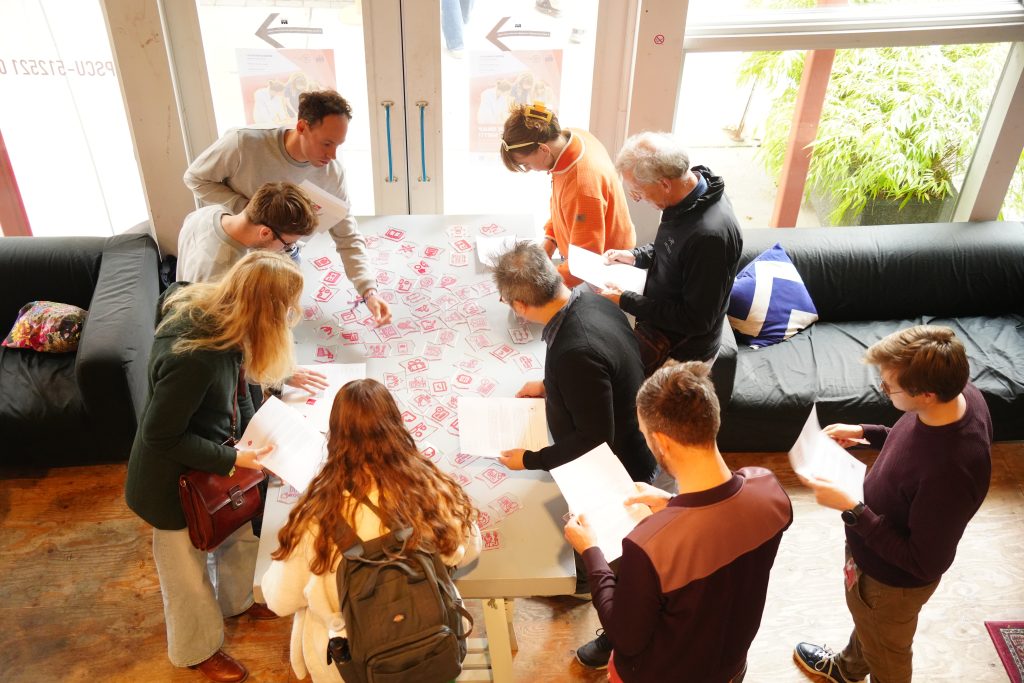
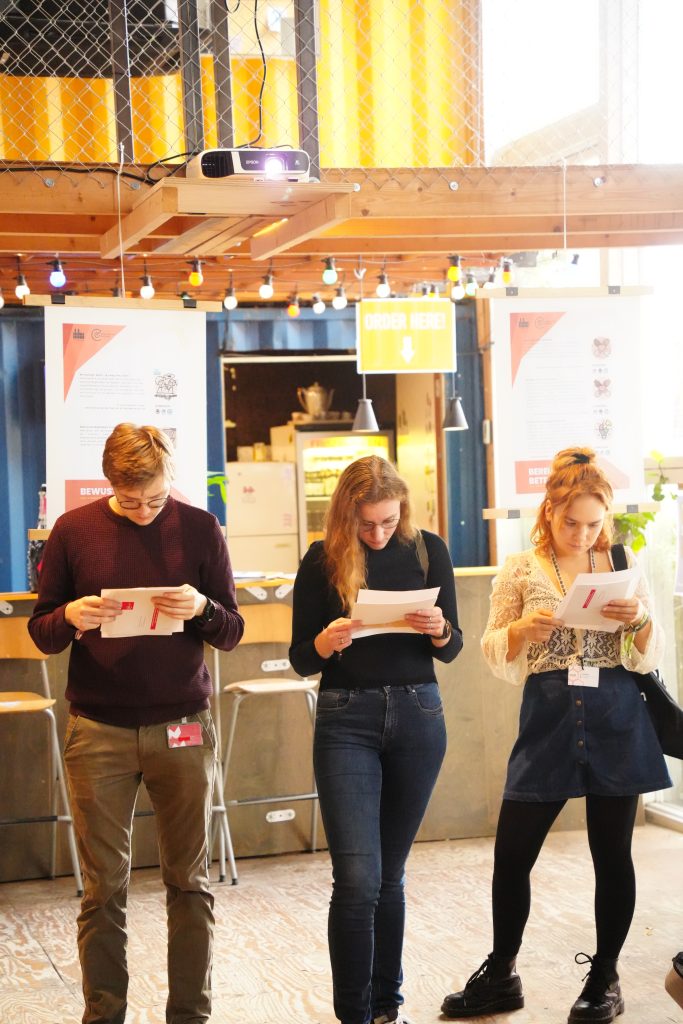
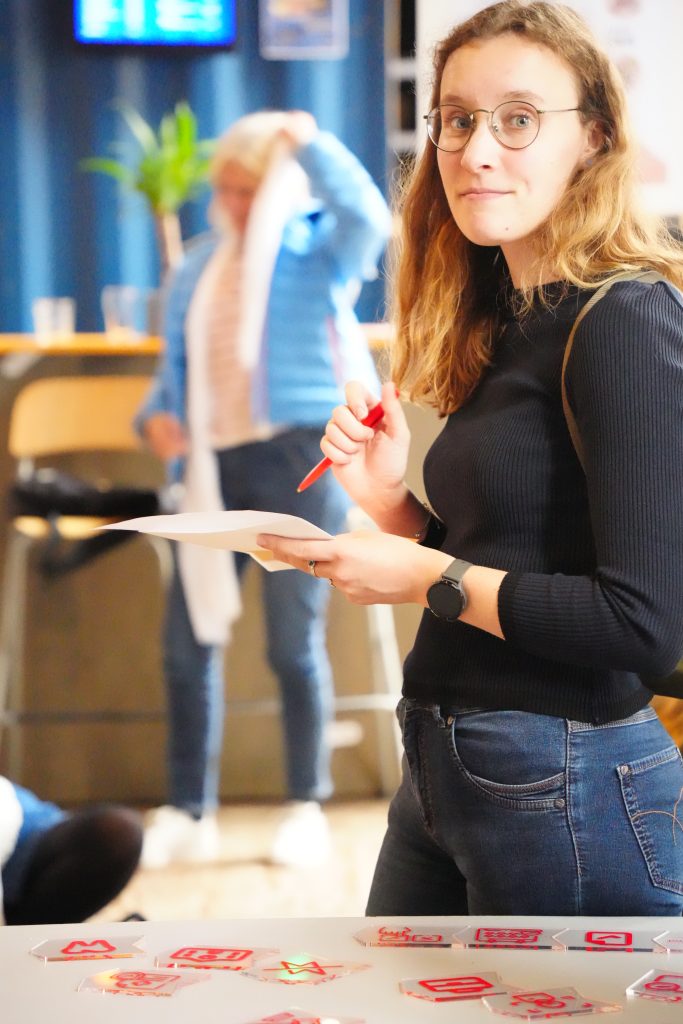
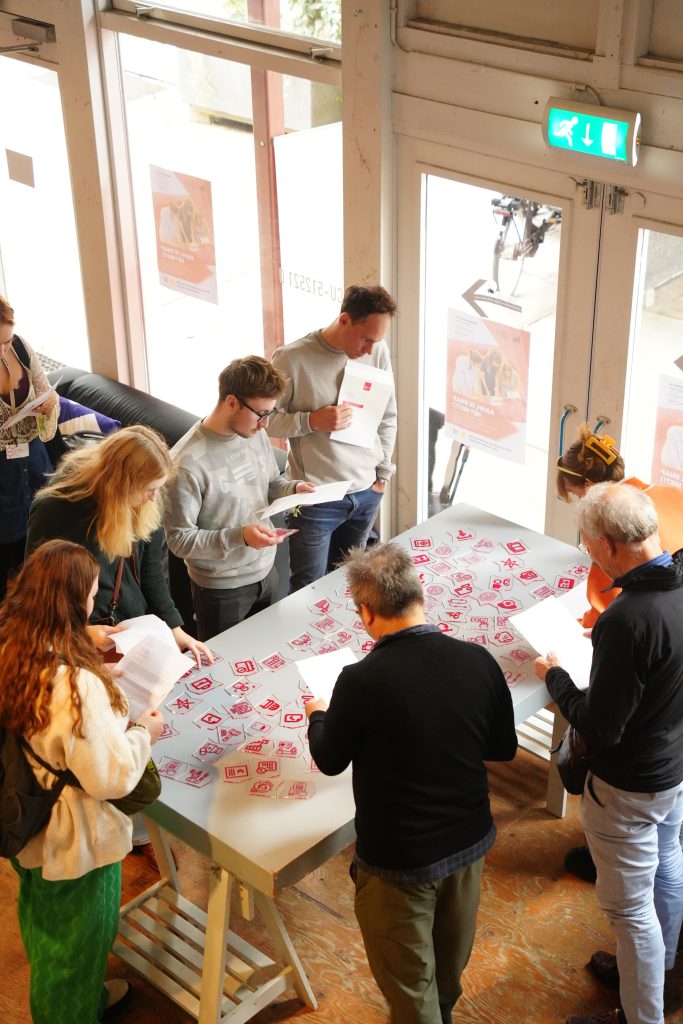
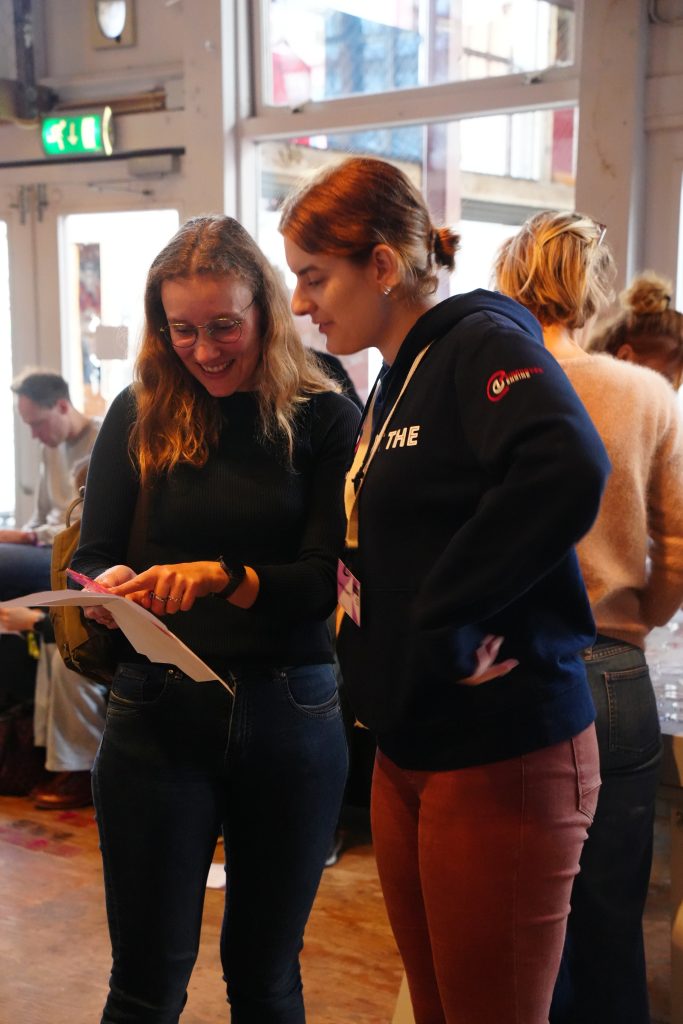
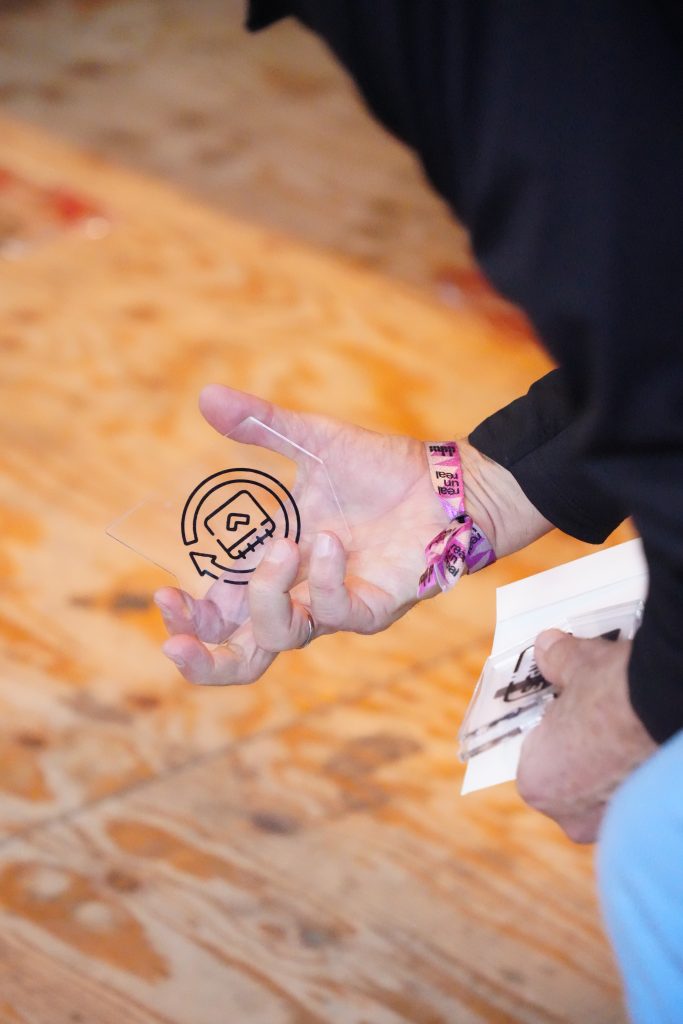
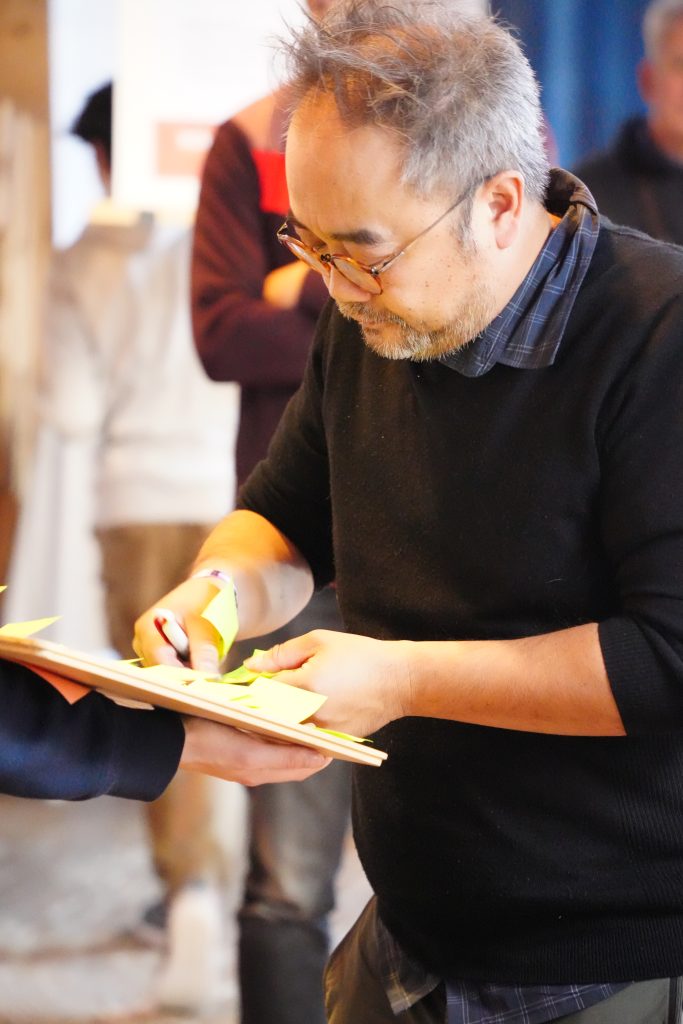

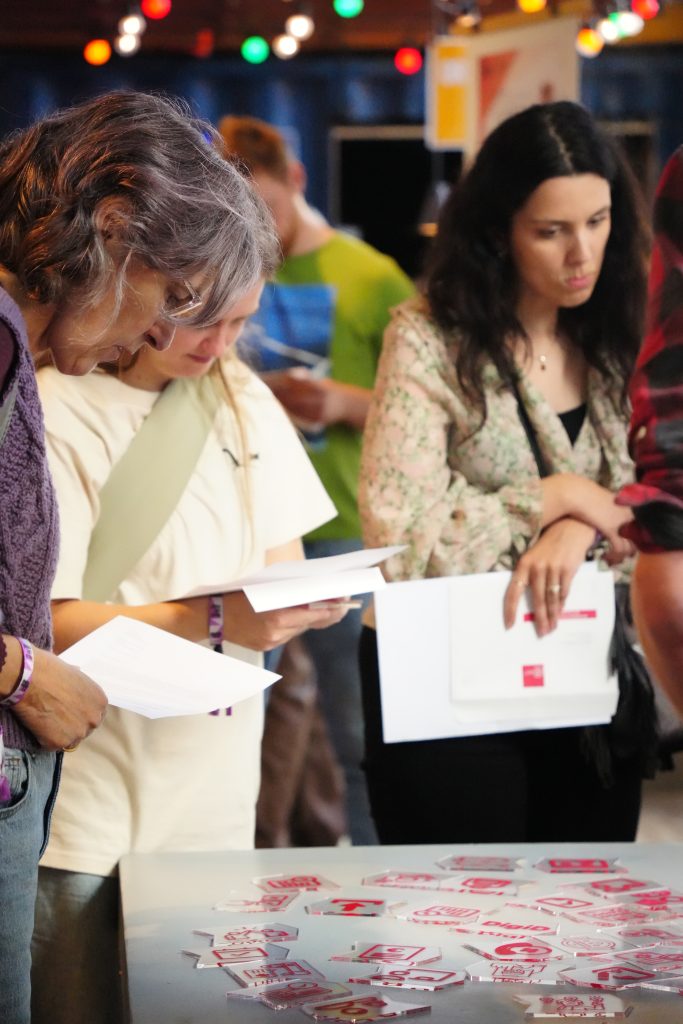
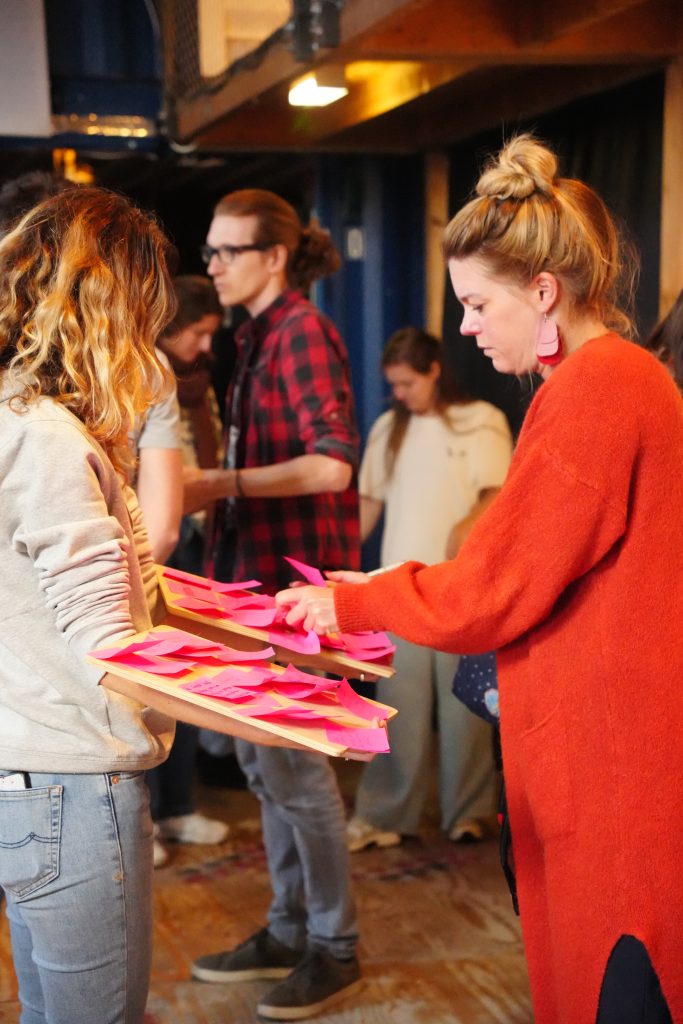
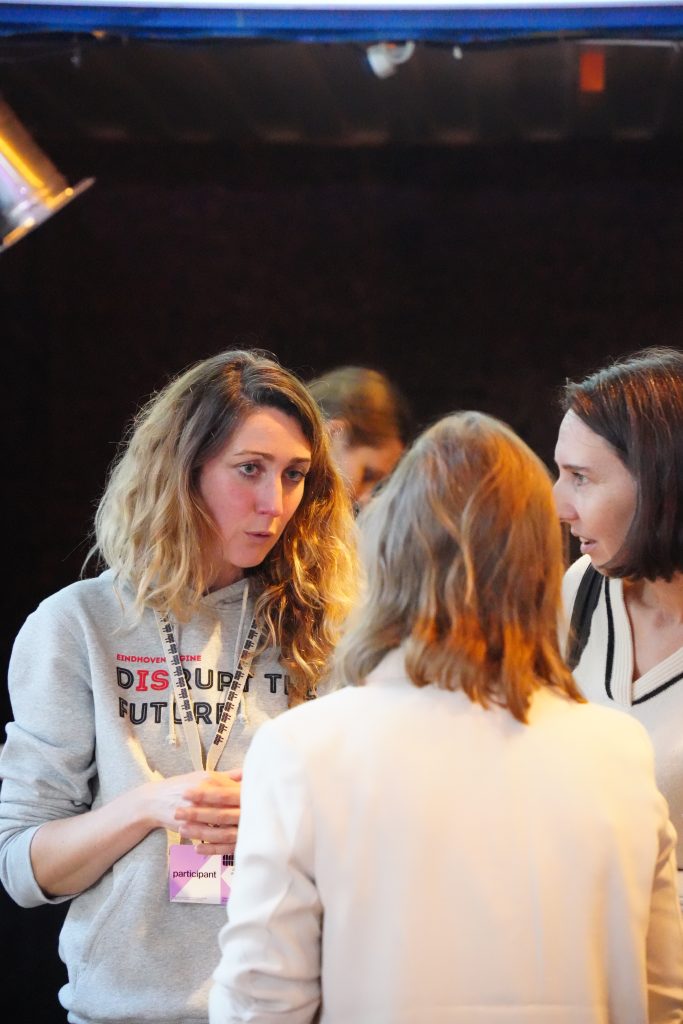

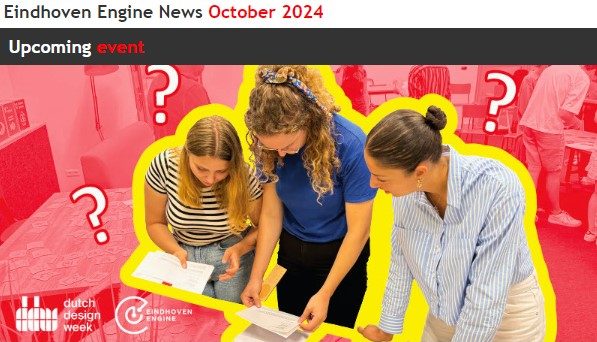
Eindhoven Engine News – October 2024
In this edition of Eindhoven Engine News: our participation in Dutch Design Week 2024 with ‘Aahh, ik snap het niet!! workhop, more about the upcoming Festival of Disruption, and project updates!
What else is happening at Eindhoven Engine?
Innovative solution for grid congestion: GENIUS project
As energy demands continue to rise, many regions, including the Brainport region, are facing significant grid congestion challenges. These issues hinder the efficient use and storage of renewable energy, putting strain on the local electricity network. With ambitious sustainability goals in place, there is an urgent need for innovative solutions to optimize energy management and ensure a stable grid.
Introducing the GENIUS project
A promising answer to these pressing issues is the GENIUS project (Grid Efficiency and Network Integration for Universal Sustainability). With €1 million in funding, the GENIUS project is set to pioneer energy efficiency and tackle grid congestion challenges. This initiative is a collaborative effort involving 13 partners, including Eindhoven Engine, and is part of its Livable Regions program
A blueprint for nationwide application
The project aims to smartly address grid congestion, enhance connectivity, and create a sustainable testing ground for innovations. With the GENIUS project, the TU/e campus will become a smart lab for energy transition solutions. Ultimately, this project will served as a blueprint for efficiently managing energy demand. The goal is to develop solutions that can be applied to approximately 3,500 industrial sites across the Netherlands, ensuring a more stable and efficient energy network.
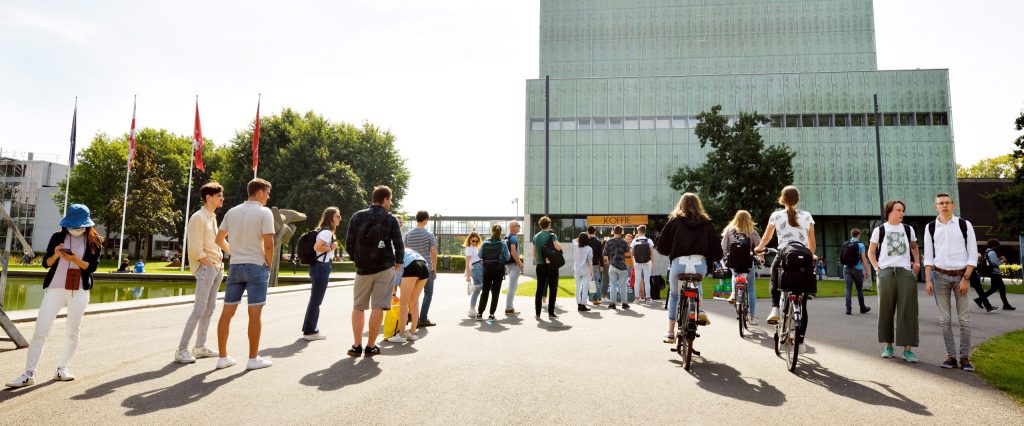
For more details, check out the article published by Innovation Origins.
New project videos: Advanced piezo-electric wafer stage project
Keeping up with the demand for manufacturing growth is the main challenge for the entire semiconductor industry. The Eindhoven Engine OpenCall project ‘Advanced long-range piezo-electric wafer stage’ therefore aims to demonstrate the feasibility of an ultra-short stroke stage using lightweight and compact piezo-electric actuators.
Ron de Bruijn – PhD candidate TU/e
My research is about wafer stages that are driven by piezoelectric actuators. These actuators make a mechanical contact between the rest of the machine and the wafer stage. Minimal disturbance or vibration in the rest of the machine could actually affect a wafer position.
Gregor van Baars – Projectlead TU/e & Systems engineer TNO
ASML is extremely successful with their current technology. The question lies in how much room there is for expansion. This research begins from a completely different standpoint, offering significant advantages but also presenting numerous challenges.
ThinkWave: empowering innovation, one move at a time
Hi, I’m Kay Smits (23 years old), a business innovation graduate now pursuing a master’s in data science and working one day a week at Eindhoven Engine. For my bachelor’s thesis, I explored the ever-evolving field of innovation management and how we can better measure and stimulate innovation processes. This journey led me to Eindhoven Engine, where I had the exciting opportunity to dive deeper into what really drives successful innovation.
A strategic platform
After months of research into factors like technology push, market pull, and open innovation, I developed ThinkWave – a virtual tool that brings together the best methods to manage and stimulate innovation. It’s more than just a game; it’s a strategic platform where technology meets market demands and collaboration opens doors to forward-thinking solutions.

Unique innovation journey
Why am I sharing this? Because ThinkWave isn’t just about theory – it’s about practice. It helps you navigate your unique innovation journey, offering a flexible, structured framework. Think of it as a playground where ideas are organized, visualized, and challenged to grow beyond traditional boundaries. The tool allows you to customize your approach based on your project’s needs, helping you identify which strategies can truly drive impact.
ThinkWave: unlocks new ways to manage and stimulate your innovation journey.
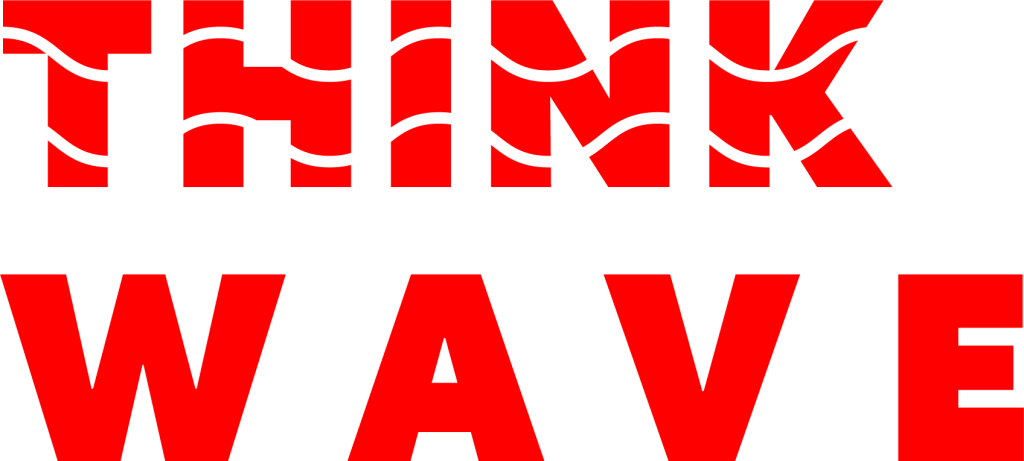
The biggest difference in your innovation process
Our goal at Eindhoven Engine is simple: to help you pinpoint where we can make the biggest difference in your innovation process. We’re committed to contributing to durable, future-proof, startups and organizations, and ThinkWave is just one way we’re doing that.
Are you ready to challenge your innovation process? Let ThinkWave take you further. Do you want to know more about this innovation tool? Please contact Kay Smits at k.smits@tue.nl
New students at Eindhoven Engine
In September, six talented students from Fontys, Avans, and TU/e joined Eindhoven Engine. They will contribute to our four key programs:
- Sustainable Semicon
- Future-Proof Care
- Inclusive Society
- and Livable Region.
Their mission? To devise innovative solutions to significant societal challenges, directly impacting our region. With their fresh perspectives and creative energy, they are set to turn theory into practice and bolster our mission.
In their first week, the students were immediately tasked with tackling issues within their respective pillars, generating their initial ideas. The first mini demo day showcased the students’ inspiring viewpoints and innovative thinking!
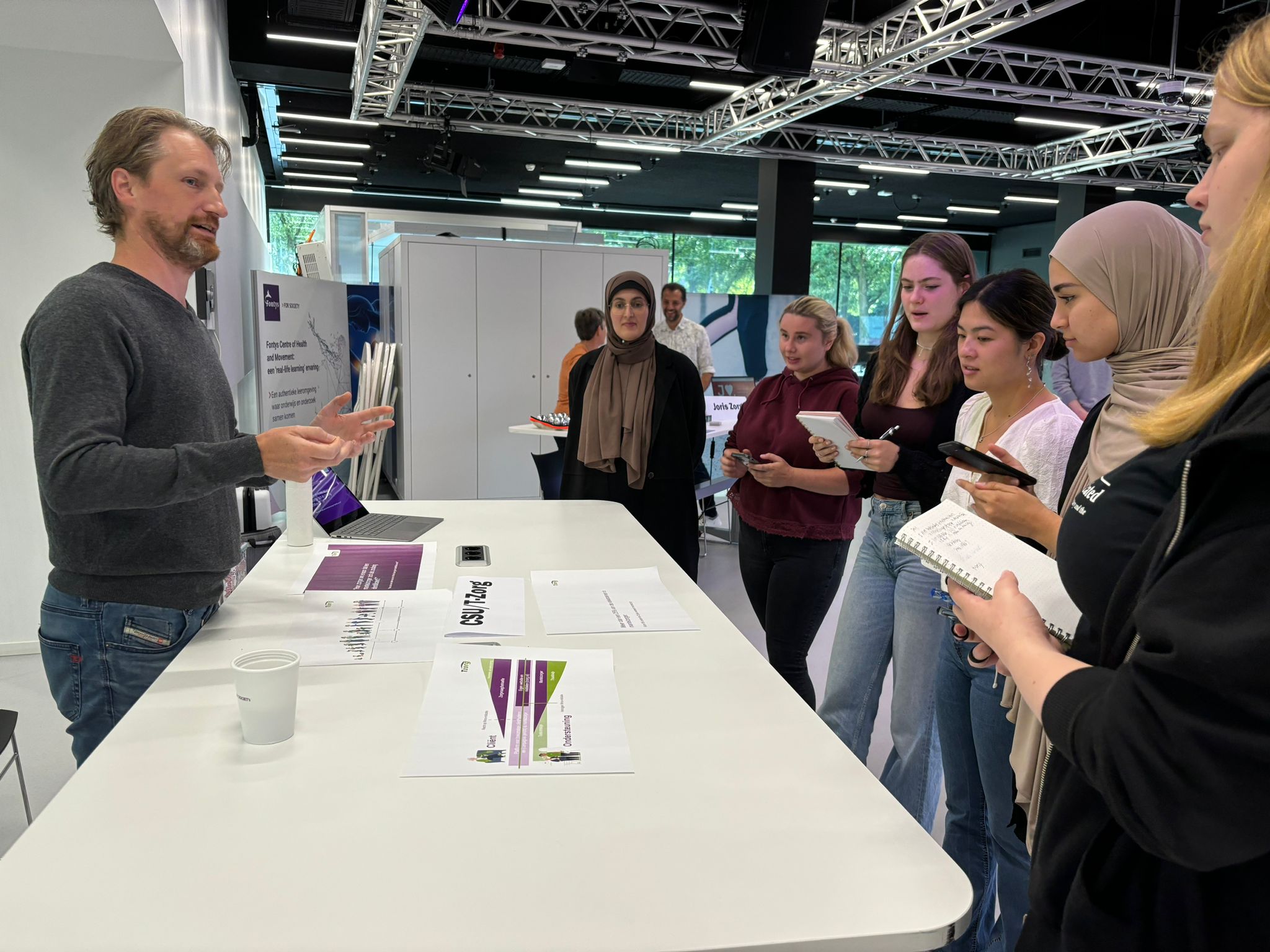
More students
Fontys Crossover Lab
In the Fontys Crossover Lab, 25 students are taking on the challenge of addressing a significant social issue. By thinking and acting radically, utilizing system analysis, and adopting a multi-disciplinary approach, they are working within the Inclusive Society framework. Each group aims to develop a design, proposal, or recommendation that addresses the complex problem of the lack of basic skills.
Our Bridge Builders team provides weekly inspiration and feedback, guiding the students throughout the project. Their efforts will culminate in a final exhibition at Fontys in November.
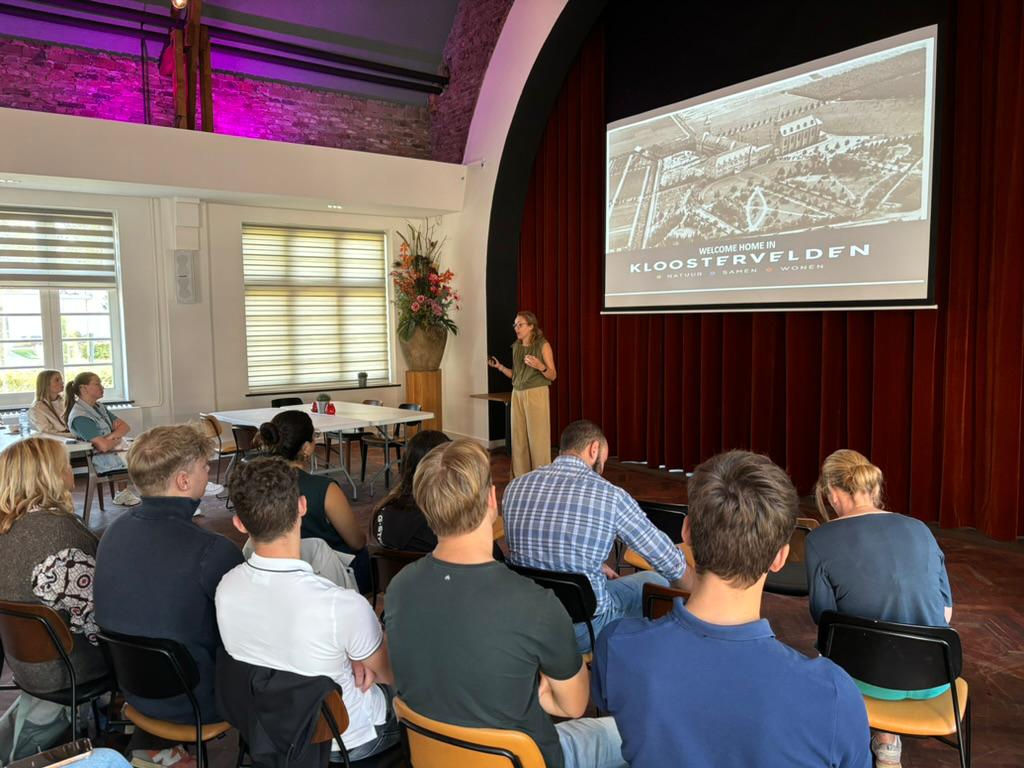
Project from Kempenhaeghe
Another 19 students have started at Eindhoven Engine. These students from Fontys Paramedic and Avans Business Innovation took up a challenge from Kempenhaeghe, a center of expertise for complex epilepsy, sleep disorders and neurological learning and developmental disorders, to strengthen the involvement of the community in care for residents of Kloostervelden, a neighborhood in the village of Sterksel, Noord-Brabant. In this neighborhood residents of Kempenhaeghe live together with regular residents of Sterksel .
This challenge provides multiple learning components for the students, addresses current challenges in specific domains for the clients, and contributes to Eindhoven Engine’s mission to tackle the larger ‘wicked problem’ of making healthcare in the Netherlands future-proof.
The program spans multiple years, with research results being handed over to new groups of students in a relay-like manner, ensuring a sustainable impact.
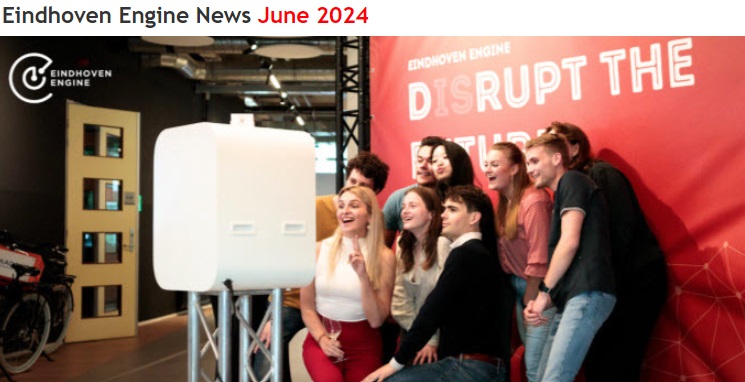
Eindhoven Engine News – June 2024
In this edition of Eindhoven Engine News: Towards a more inclusive society to raise awareness of basic skills gaps, 5 years of Eindhoven Engine, Innovator in the Spotlight Devansh Kandpal & more!
What else is happening at Eindhoven Engine?
